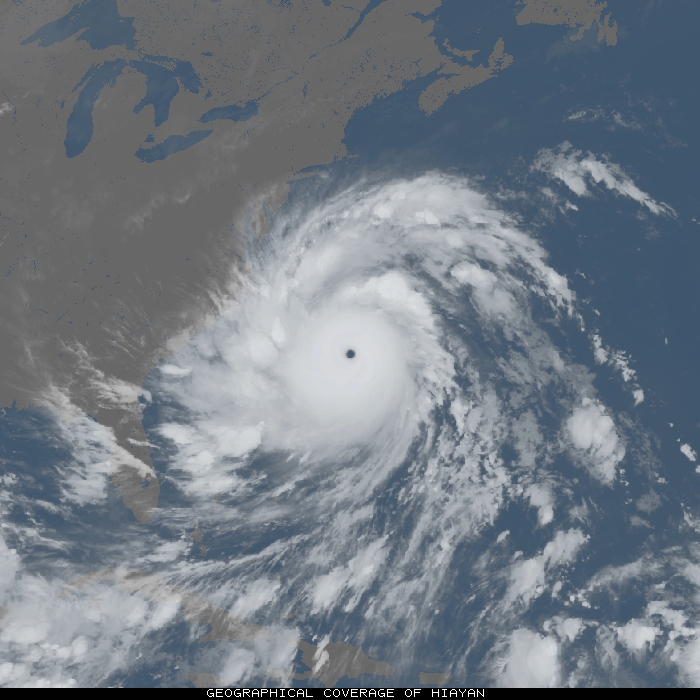
Haiyan at peak intensity juxtaposed over the US East Coast. The size and power of this storm has left some storm meteorologists wondering if the current Dvorak hurricane intensity scale should now be extended to include Category 6.
Survivors of what may end up being the most deadly storm in human history are trying to pick up the pieces in the Philippines, after Typhoon Haiyan raked the island nation with 200 mph wind gusts and a ten meter storm surge. In some places there’s not many pieces left to pick up:
Politico-AP — Corpses hung from trees, were scattered on sidewalks or buried in flattened buildings — some of the 10,000 people believed killed in one Philippine city alone by ferocious Typhoon Haiyan that washed away homes and buildings with powerful winds and giant waves.
As the scale of devastation became clear Sunday from one of the worst storms ever recorded, officials projected the death toll could climb even higher when emergency crews reach parts of the archipelago cut off by flooding and landslides. Looters raided grocery stores and gas stations in search of food, fuel and water as the government began relief efforts and international aid operations got underway.
Storm meteorologists are still compiling and parsing data on max winds and minimum surface pressure, discrepancies remain in both. But Jeff Masters at WeatherUnderground has posted estimated showing Haiyan to be the most powerful storm at landfall in history:
Haiyan hit Guiuan, on the Philippine island of Samar, at 4:40 am local time November 8, 2013 (20:40 UTC November 7.) Three hours before landfall, the Joint Typhoon Warning Center (JTWC) assessed Haiyan’s sustained winds at 195 mph, gusting to 235 mph, making it the 4th strongest tropical cyclone in world history. Satellite loops show that Haiyan weakened only slightly, if at all, in the two hours after JTWC’s advisory, so the super typhoon likely made landfall with winds near 195 mph. The next JTWC intensity estimate, for 00Z UTC November 8, about three hours after landfall, put the top winds at 185 mph. Averaging together these estimates gives a strength of 190 mph an hour after landfall. Thus, Haiyan had winds of 190 – 195 mph at landfall, making it the strongest tropical cyclone on record to make landfall in world history. The previous record was held by the Atlantic’s Hurricane Camille of 1969, which made landfall in Mississippi with 190 mph winds.

Yesterday German news said that in the Filipine city of Tacloban (population 200,000), there are 10,0000 dead and 80% of the buildings are destroyed. All water supplies are destroyed, and food is scarce to nonexistent. The report further said that the Fiipino Army is sending in troops to prevent looting. WTF?
The Foundation Beyond Belief has chosen the Citizen’s Disaster Response Center as the recipient of donations. They are based in the Phillipines, and so are already “on the ground”. 100% of your donation goes to CDRC, the foundation does not take a cut.
http://foundationbeyondbelief.org/crisis